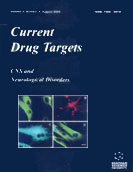Abstract
The Bcl-2 family of proteins contains both anti and pro-apoptotic members that have been shown to regulate neuronal cell death during development and in many models of acute and chronic neurodegeneration. This family of proteins can be divided into three distinct classes based on structure and function: the antiapoptotic sub-group; the pro-apoptotic, multi-domain sub-group; and the pro-apoptotic, BH3 domain-only sub-group. Alterations in the expression of Bcl-2 family members occur in several animal and human neurodegenerative diseases including Alzheimers, Huntingtons and Parkinsons diseases and Amyotrophic Lateral Sclerosis. Similar changes are seen in in vivo and in vitro models of acute neurodegeneration, including stroke and traumatic brain injury. Methods to increase the overall expression and / or function of anti-apoptotic Bcl-2 family members, and thus promote neuron survival, have been studied extensively in these models. Most treatment efforts focus on either the targeted delivery via viral vectors of anti-apoptotic members of Bcl-2 family members into the affected brain regions of interest, the generation of direct interactions of small molecule inhibitors with Bcl-2 family members, or the induced expression of Bcl-2 family members secondary to pharmacological manipulation. Although many challenges exist in the design of safe and efficacious Bcl-2 family mimetics for the treatment of neurodegeneration, such strategies offer great promise for preserving neuron viability, and hopefully function, in a variety of human neurological diseases.
Keywords: pro-apoptotic, Bcl-2, neurodegeneration, neurological diseases
 12
12

















